 Restoration travesty (January 2023)
Restoration travesty (January 2023)
“Paths are human; they are the traces of our relationships.”
Channel Islands Restoration, her purported protector, deflowered the virgin.
A screaming outrage. A grotesque violation.
This was not restoration. This was mutilation.
I met a guy once. They took a sharpened piece of metal to the soft flesh of his face. He came out of prison looking like he had tried to French kiss Freddy Krueger without an invitation.
That’s what they did to Spring Potrero in the San Marcos Foothills Preserve.
Out came the long knives to carve a wicked, winding wound plumb through the heart of the small bowling pocket of grassland above the one-and-only spring.
The Preserve covers no less than 200 acres with miles of trails and this, of all places, is where they chose to plow out a jumbo-sized walking course.
There was no need for it. Another thinner trail had long existed, the people’s path, let’s call it.
Now, mind you, the experts will tell you the new walking course is for the birds.
And they’re right about that.
 The original thin little footpath, newly decommissioned, but still regularly walked by the usual suspects. (January 2023)
The original thin little footpath, newly decommissioned, but still regularly walked by the usual suspects. (January 2023)
The Channel Islands Restoration walkway looks like the work of a high school student striving to meet the soulless standard of some urban planning or design academy.
The path is not organic and not natural, and it very much looks it. It looks corporate or institutional or of housing tract development origins.
It looks nothing like the real, natural footpaths created by common walkers in our local open spaces.
The new walking course consists of mindless meanders, like the go-cart track at Golf’n’Stuff in Ventura or a racetrack, winding and weaving for no apparent reason other than to wind and weave and for distance.
It’s reminiscent of tricycle tracks at preschools.
It appears designed solely for those needless reasons alone, carved into the land without any care or consciousness whatsoever for its natural character and the aesthetics of place.
 Bachelor’s Button on West Mesa, San Marcos Foothills Preserve
Bachelor’s Button on West Mesa, San Marcos Foothills Preserve
Small signs placed in the potrero postinteritus made the dubious claim that the hideous new walkway had somehow increased the value of San Marcos Foothills Preserve.
The new path leads nowhere remarkable or anywhere of interest. Nor does it serve to connect anything of import.
The plain simple truth is that there was no need for development of this caliber and in this particular spot so that the birds were given some consideration and protection.
And why locate a new trail crossing right over and through the headwaters of a creek anyway?

A seasonal seep flows from the potrero and joins runoff from the spring into the tiny drainage.
Go there this winter, once the coming El Nino rains hit, on top of the preload of last winter’s epic rainfall, and you might see the seep flowing from where the new trail crosses back and forth.
Don’t get me wrong. It’s not a creek bed. But the water does indeed flow out of Spring Potrero and it is visible, at times, toward the lower portion. Otherwise, the seep issues from the ground a little lower down slope, immediately east of and adjacent the spring site.
Why even bother forever marring Spring Potrero in an open space otherwise consisting of 200 acres? Why here? Why not anywhere else if anywhere at all?
We walk the preserve, the two of us, five miles never retracing a single step and we still have plenty of trail options left for further distance if desired.
There was not a lack of existing trail beforehand, before the developers showed up many years later under the guise of restoration and enhancement. Not in overall total distance nor in variety of terrain and destination.
If any pathway was needed, then there was no lack of open space elsewhere to locate it.

“Paths are the habits of a landscape. They are acts of consensual making. It’s hard to create a footpath on your own.
…
Paths connect. This is their first duty and their chief reason for being. They relate places in a literal sense, and by extension they relate people.
…
Paths are consensual, because without common care and common practice they disappear: overgrown by vegetation, ploughed up or built over.
…
Like sea channels that require regular dredging to stay open, paths need walking.”
–Robert Macfarlane, The Old Ways: A Journey On Foot
The people’s path by contrast is organic and natural, a beautiful cultural creation that compliments the land.
Our path had been laid down one step at a time, by a multitude of people, over the course of years, each step by each walker a vote registering on the land like a signature to form the unspoken consensus of its most frequent users, who are closest to this place in body and mind, and then signed off on by all other walkers who followed thereafter.
Yet, beyond this raw democratic ideal, the people’s path is smart and discreet, skirting Spring Potrero and leaving it and the viewshed nearly untouched.
Our trail winds intelligently around the land sensitive to natural character and aesthetics, cognizant of Spring Potrero’s station afore the Santa Ynez Mountains when approaching from the west.
When walking the original slim footpath the trail was hardly visible and Spring Potrero lay untouched before you, spotless in front of the mountain backdrop.
That is no longer the case.
 Sunset glow on an iris in the preserve.
Sunset glow on an iris in the preserve.
People’s paths come into being as necessary, when necessary. Often times in casual defiance of the overwrought designs of urban planners. There is a name: desire paths.
The people’s paths are cultural creatures that live and die, shrink and grow, for better or worse, one footstep at a time.
People’s paths grow in width as necessary, only when necessary. The path will begin its life looking little different than an animal trail. With use through time it becomes an evident human footpath, but remains thin singletrack.
If more people walk the path it may grow in size to accommodate the increased traffic, but only as much as is needed. Not by the guess work of a designer or laborers, but out of practical necessity by the people actually using the trail. People paths shrink and grow along the way depending on the surroundings. It’s never one-size fits all.
The people’s path chosen by many is by unintended consequence–by design of the invisible hand–never too big nor too small and never misplaced.
The people’s path is always just right, naturally.
The new walking course was at best a wild guess at what was needed, where it was supposedly needed, and decided on by a select few and then imposed.
 View of Spring Potrero as it looked in 2016.
View of Spring Potrero as it looked in 2016.
 Looking over the spring denoted by the blue dot and onto bowling Spring Potrero noted by the large red line. The other two red slashes underline the course of the people’s path, hardly visible.
Looking over the spring denoted by the blue dot and onto bowling Spring Potrero noted by the large red line. The other two red slashes underline the course of the people’s path, hardly visible.
 The view showing the course of the new pathway in red and the old trail in yellow. (January 2023)
The view showing the course of the new pathway in red and the old trail in yellow. (January 2023)

 Mindless meanders.
Mindless meanders.
I commented to friends online in January 2023:
Our trail of less consequence is hereby recommissioned. I saw a guy yesterday take our old trail and shun the new one. It’s not just me. It’s arrogant and ignorant what they have done here. And many are not going to go along with it. We’ll vote with our feet. And our passive resistance will be seen in the continued life of the trails they seek to terminate.
They stormed in like a bull in a china shop, rude and insensitive and destructive of people’s places and things.
They posted signs saying our trail was decommissioned and they chopped up the path trying to encourage non-use and natural reseeding of the grassland.
It has not worked. It appears it will not work.
People saw the signs and promptly recommissioned the old path and the trail has since been in regular use.
This was not restoration nor enhancement, as they left behind in our open space a far larger footprint than what existed beforehand, and they destroyed a defining feature of the land.






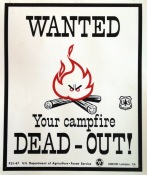


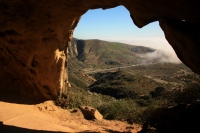

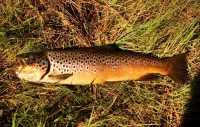
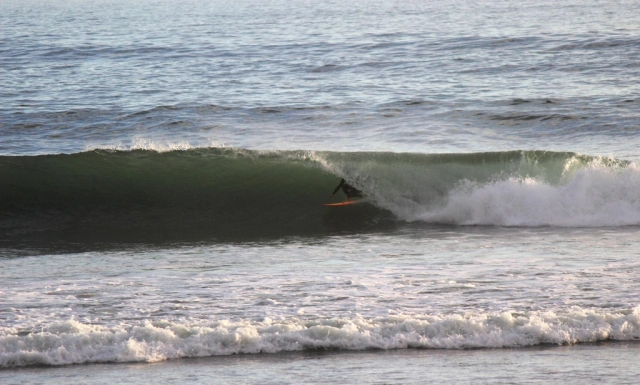
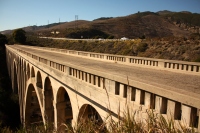



















Channel Islands Restoration has done some really great projects. But this one fails the test. Have you asked them why this was necessary? My guess is that they wanted path that could provide access to those in wheelchairs. While it is commendable that facilities are designed for those with disabilities sometimes a good thing can be taken to far and in balance more is harmed than improved. Such seems to be the case here.
I have not asked them. I couldn’t for the life of me think of any reason why it was necessary. I’m not opposed to increased access for disabled folks, but the idea on its face is not practical unless the path were paved. This is obvious stuff experts should know if not envision. If dirt, then the gophers and natural forces quickly turn it to a potholed impossible nightmare for wheeled access. Nothing short of paving would last without a tremendous amount of maintenance. And who would do it or pay for it?
The smart option would be to utilize existing dirt roads and larger pathways already existing within the preserve for wheelchair or disabled access. There is no need for the building of new paths.
It is a shame that the CIR group didn’t partner with the Santa Barbara Trails Council on SMF trails.
If the general plan of management for the preserve allows for such things I don’t suppose it matters too much who is involved one way or another.
Unfortunately, I saw your piece on the trails at the San Marcos Foothills Preserve only recently. Of course, if you had dropped us an email, I would have been able to respond promptly, and perhaps you would have found yourself better informed about the trail work we are doing at the Preserve. Are you truly curious about why the trails were built the way they are? You made a whole lot of off-base declarative statements: (mindless meanders, designed by a high school student, at best a wild guess) but none of that is true. The path strategically avoids both large patches of perennial native grass, animal burrows, eroded areas, and it is also designed to avoid steep areas that have been steadily eroding and damaging nesting areas. The high school student that you imagine designed the trails was actually celebrated trail guru Ray Ford.
Now that the property is under public management, steep “social trails” that simply connect people from one point to the next by the shortest possible route are not adequate on many levels. In places they are both dangerous for people with limited mobility, and they plow through native plants and nesting habitat that is invisible to the average hiker. Further, we did not build any trail across a creek. We moved the trail that went by the spring upslope, but the old trail crossed the same creek-like feature that is crosses now.
I for one keep an open mind, and I appreciate constructive criticism. However, you may have had a very different attitude about our work if you had asked your questions of me rather than throwing out uninformed criticism without knowing the facts. Of course, you are under no obligation to get the facts right, but when you misunderstand and attack the work of a nonprofit that depends on the goodwill of the public, your criticism ends up being counterproductive for our shared love of the natural world. The scope of your attack is too much for me to address here, but I would truly enjoy talking to you further about this. Feel free to contact me anytime: 805-448-5726
“you made a whole lot of off-base declarative statements: (mindless meanders, designed by a high school student, at best a wild guess) but none of that is true. The path strategically avoids both large patches of perennial native grass, animal burrows, eroded areas, and it is also designed to avoid steep areas that have been steadily eroding and damaging nesting areas.”
It’s worth noting that you would feel the need to defend something of this sort in the same breath as you describe with concern the very reasons why it never made common sense to construct to begin with, in a 200 acre parcel, with no previous lack of distance to walk.
And you are wrong to suggest that in order to avoid a bush or burrow or whatever, that a trail necessarily must be designed as done at the preserve. Nonsense.